How a movie introduces its central characters, defines how the audience will perceive not only that character, but the tone and plot of the entire rest of the movie. A movie only gets one chance to make a first impression. Now let’s take a look at one scene that perfectly introduces the movie’s antagonist, tone, and defines the expectations that the audience will have for the rest of the movie. That scene is the introduction of Jerry, from the 2018 movie “Tag.” Which through a single scene sets up his traits and characteristics but then also the tone and plot of the rest of the movie.
With some movies you can identify everything you need to know about a character through a single frame. Take this single frame from the 1931 movie “Dracula” (Figure 1). The character is cloaked in all black, and standing in darkness, we know he is a threatening character from these aspects alone. His face stands out in stark contrast to the rest of the frame, as it’s one of the only things we can see. On the left side of the screen we see a coffin so we know he is something deadly. His expression and makeup tell us he is not something entirely human.
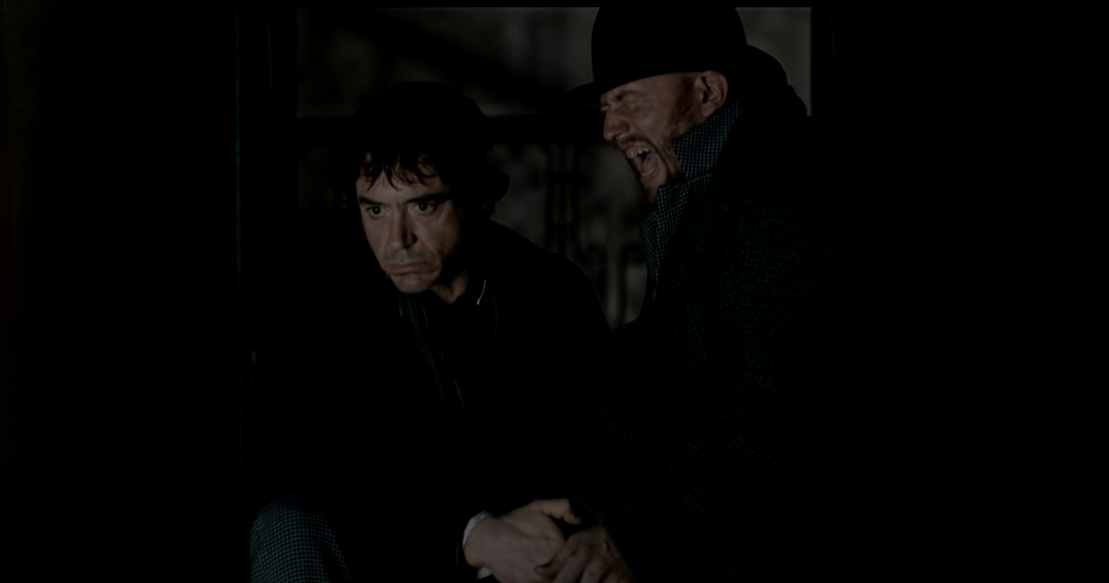
Figure 11. Medium shot

Figure 1. Low angle medium full shot
Or take a look at Guy Richie’s introduction of Sherlock Holmes, from his 2009 movie of the same name. We see Sherlock chasing a much faster carriage on foot, jumping in between the streets to keep up. The first time we hear Sherlock speak is when he observes in his mind and then predicts a fight he is about to have (Figure 11). This scene does an excellent job of showing that Sherlock is incredibly smart and able to think through the world much faster than anyone else. His introduction has one flaw, it does not do a good job of setting up the tone, and expectations for the rest of the movie.
The movie “Tag” directed by Jeff Tomsic is about a group of five friends who started playing tag when they were kids in their backyard. This same game of tag continued on every May for the rest of their lives, in fact decades. Four of the friends take this as a friendly competition and get together, however the 5th one, Jerry, has never, and is determined to never be tagged. The five of them are brought back together because they think it is going to be their last year as Jerry is getting married. With a reporter following them around writing about their story, we see what lengths Jerry is willing to reach, to never be ‘it.’
The movie takes its time introducing Jerry in fact it takes until almost a third of the way into the movie. There has been a lot of build up to his introduction. The movie has a lot of responsibility to answer the question to the viewer, ‘who is this person?’ ‘is he really that scary?’ The scene opens with showing us the inside of the building as lights shine across the inside of the window (figure 2). A red sports car drifts into frame from the outside of the building, already setting the tone of an action movie like protagonist.

Figure 2. Low angle tracking shot

Figure 3.1. Extreme close of up Hoagie.
We switch back into the inside of the building getting a rapid series of cuts between extreme close ups of most of the cast, all of them looking a little worried, if not terrified (Figure 3.1). This further extends the idea that Jerry is someone to be scared of. The scene cuts back to the outside, where we see a pair of nice shoes step out of the car and the camera tracks them towards the entrance. As he walks forward dramatic instrumental music begins to play, the only music in the scene. This transitions into a panning shot that leads to two more close ups with the last one being a close up of Bob who is ‘it’ (Figure 3.2).
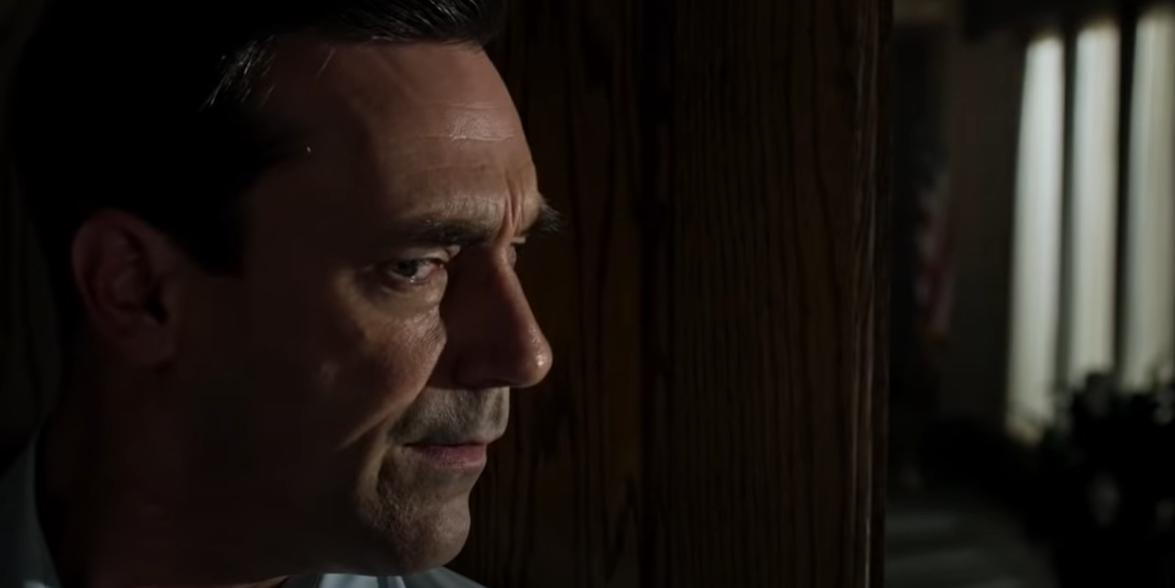
Figure 3.2 Extreme Close up of Bob.
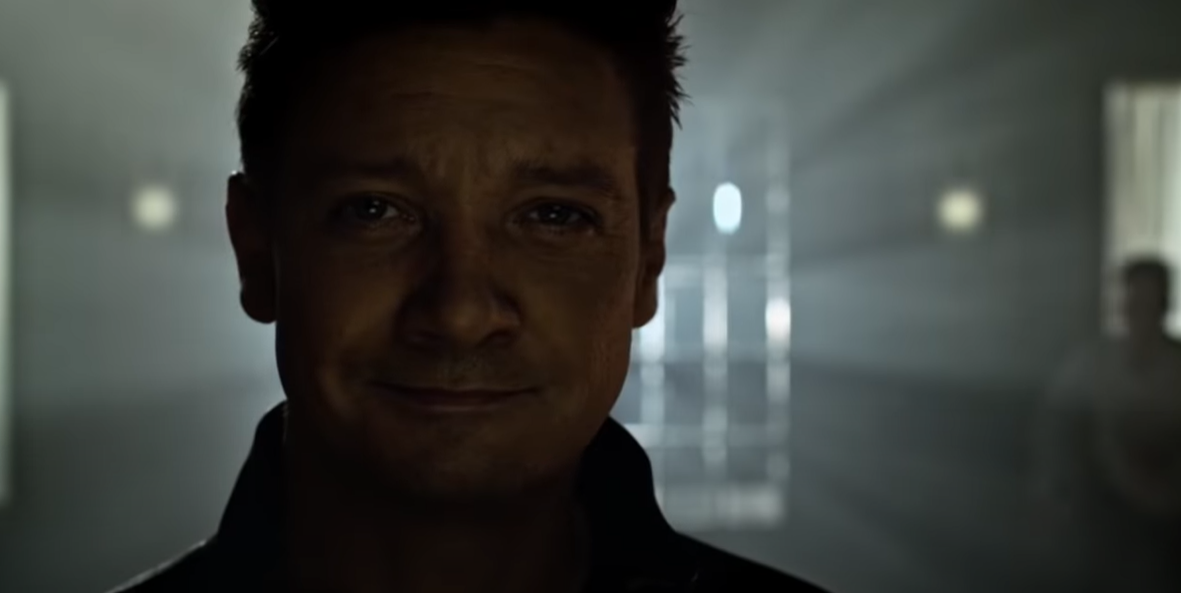
Figure 5. Extreme close up of Jerry with low depth of field.
Finally we get a static camera in the middle of the room, Jerry walks up into the camera to create a close up of his face. This shot has a very low depth of field, creating a blurring of the background (Figure 5). This single shot is doing multiple things at once. Firstly it is showing us, the audience what Jerry actually looks like. Jerry is played by Jeremy Renner who is this film’s big actor. The person most audience members are going to recognise from his role as Hawkeye in the Marvel franchise. Second, it establishes that Jerry is part of the group playing tag. The only two characters in this scene who do not get a close up is the reporter, and Jerry’s wife. Neither of whom actively participate in the serious part of the game. Lastly, the other close ups included the backdrop, Jerry’s does not because he is living separate from the rest of the group, and is isolated from them.
Immediately after we see Jerry, the camera switches into slow motion, and we get the internal dialog of Jerry. This internal non-diegetic dialog and slow motion is highly reminiscent of Guy Ritchie’s 2009 adaptation of “Sherlock Holmes.” In both films we know that they are thinking much faster than the world around them. Which means that Jerry, and Sherlock are capable of thinking about their opponents future actions, and countering them.
Jerry hears Bob approaching from his left, and asks the question “who’s it?” Bob is the one who is ‘it’ and throughout the rest of the film is by far the most arrogant of the group. Which once again is reinforced in the fact that he thinks he will be the one to tag Jerry in this scene. Who, as soon as he realizes who is ‘it,’ takes immediate action (Figure 6). We hear as he realizes what he must do in saying “no hand shall touch my body.” We know what he is about to do before any of the rest of the cast does.

Switch into slow motion with internal monologue of Jerry, Bob on left side of shot.
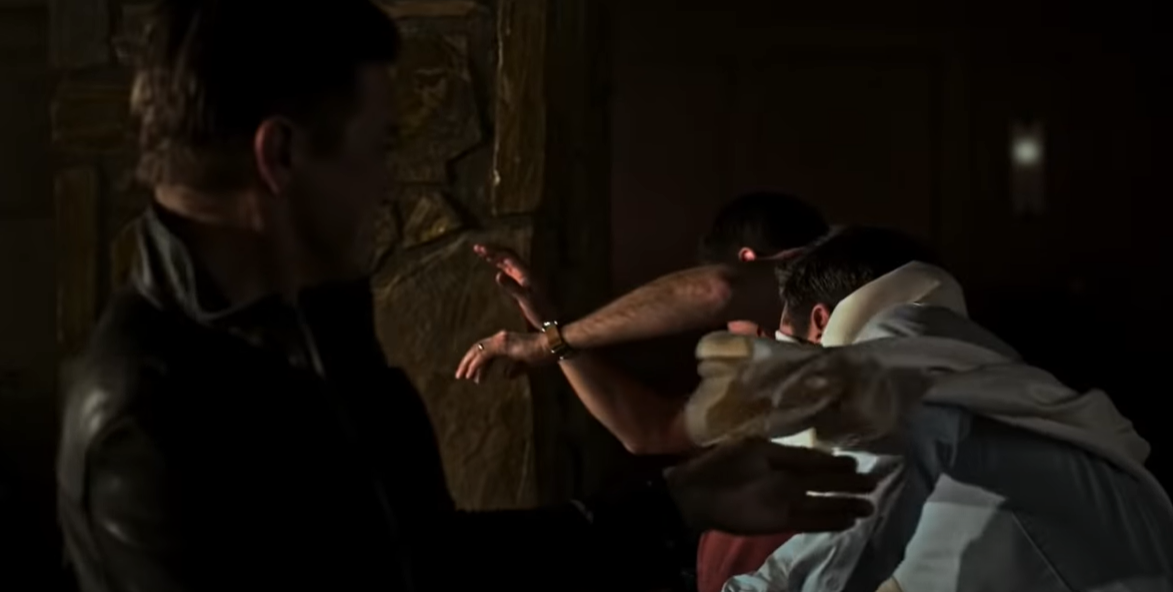
Figure 7. Medium 3 shot of Jerry (left) Bob (right) and Hoagie (middle).
Slow motion is used to show when Jerry thinks he is directly in danger. We are now watching this scene from Jerry’s point of view. So when he thinks he is in danger, the world slows down. When Jerry believes he is no longer in danger, the world returns to its normal speed. Bob is approaching from behind and reaching out his hand to Tag Jerry, when Jerry reacts and the world slows, he wraps a table cloth around Bob and swings him into Hoagie. The camera throughout, and by extension the audience is forced to pay special attention to the character’s hands. Oftentimes the characters hands if they are ‘it’ are put in the center of the frame (figure 7). We get this very comedic shot where we see Hoagie grabbing his face as he has just been slapped, and by extension, tagged and is now it. Jerry makes a mental note that he is not ‘it.’
Randy finally leaps to tackle Jerry (Figure 7.5). Which Jerry easily dodges. This gives us insight into Randy, as Randy’s jump was “poorly planned and poorly executed” (Tomsic). Which is one of the defining characteristics of Randy’s character. He is too impulsive and doesn’t think his actions through, which generates most of the conflict in his life. lot of the conflict in his life. Jerry is also using his prior knowledge of all of his friends and their flaws to use it against them.

Figure 7.5. Medium action Shot of Randy.
Kevin and Hoagie block the door. Jerry trips them and runs towards the window and jumps, here we get match on action editing to show three different angles of Jerry jumping out of the window (figure 8). Delivering on the idea proposed by the opening, that Jerry is not some normal human, but has more in common with a superhero. After breaking through the windows, he rolls down the roof and all of the rest of the characters run to the window to go look and see if he is ok. All of them are worried about him until he stands up and begins to laugh. When we switch back to the group of friends in the window, the reporter is separated from the group by a bar in the window (Figure 9). Showing that she is not a part of the game and instead is just a passive onlooker.
We see this very wide shot. It shows both the literal and metaphorical gap between Jerry and the rest of his friends (Figure 10). He is quite literally an outsider in his own friend group, emotionally, and in this case physically standing on the outside of the building. Jerry has purposely distanced himself away from the rest of his friends, putting physical space between them, because of this game, he no longer can fully trust them. Through this conversation we see that even though Jerry just jumped out of a window, none of them take it too seriously. With him saying “Never been better” (Tomsic) and Anna begins to clap. They know it is not a life or death game, even if sometimes they act like it. Jerry in particular keeps pointing out to the journalist that he has never been tagged. After some friendly banter we are introduced to Jerry’s future wife. This final part of the scene is very standard film making, with primarily shot reverse shot between the two groups. Finally this scene ends with Jerry and the rest of ‘the boys’ agreeing to a truce, and stepping inside. Showing that even after they just beat each other up, in the end they are still friends.
This scene is setting up the plot, conflict, and primary antagonist for the rest of the movie. We see that this movie is going to be an action comedy, through the dialogue and the slapstick. The audience learns that Jerry is going to out smart and out maneuver the rest of the cast at every possible point. We know he is going to be the antagonist and we understand why he is capable of being one. But at the end of the day, no matter what happens, they are all still friends. “Tag” is a perfect example of how to use a character introduction to set the tone not only for one character, but how to set up the plot and conflict for the rest of the movie as a whole.
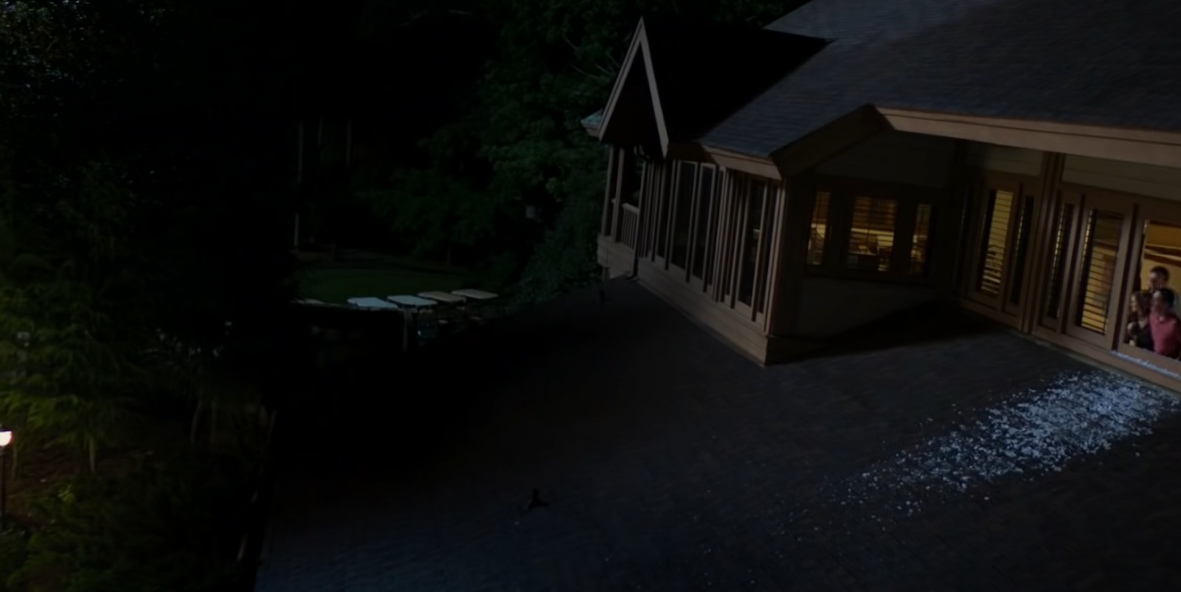
Figure 10. Wide shot.


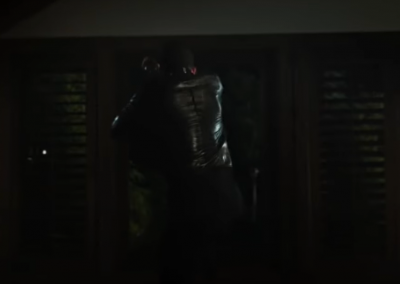

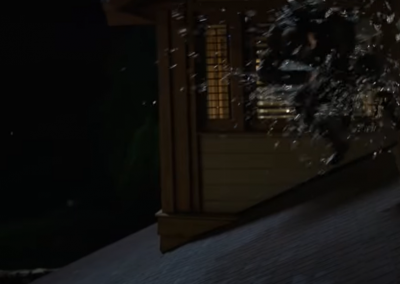
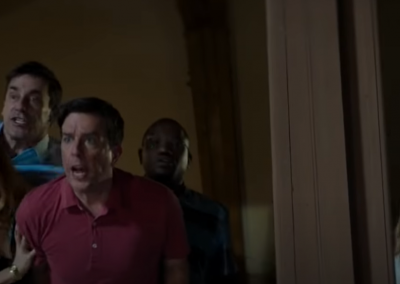
Recent Comments